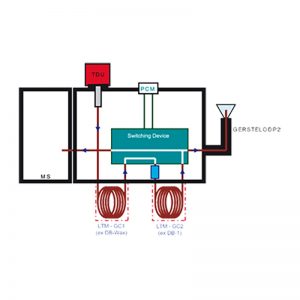Identification of important trace components in complex samples like fragrances, natural products, petroleum fractions or polymers can be challenging. Achieving the mass on column and resolution necessary to locate and identify trace components using a single chromatographic separation can be difficult if not impossible. Parallel detection with a selective detector and MSD can help locate the region of interest within the complex chromatogram, but lack of sufficient resolution may still preclude reliable identifications. Heartcutting and 2D GC using columns with different polarities can significantly improve the resolution of complex regions and is the most powerful approach for trace component identifi cation. This configuration requires a selective detector after both the pre-column and analytical column to track the components of interest through both separations, adding complexity.
We used Stir Bar Sorptive Extraction as a solventless means to introduce suffi cient mass of sample onto the pre-column. When additional mass is necessary, a cryotrap after the pre-column can function as a fraction collector to accumulate fractions from many replicates of the sample. We coupled low thermal mass (LTM) GC column modules with dissimilar column phases using a software-controlled column switching device to perform heartcutting 2D-GC on two sample types. This system was configured with dual detectors to track and identify trace components of interest and a 6-port high temperature valve to allow selecting single column or multidimensional operation with dual detection in either configuration.
Separation and identification of selected trace flavor components from alcoholic beverages and sulfur compounds from food products demonstrated the effectiveness of this system. The main advantages of this configuration were the simple selection of single or two dimensional operation, the ability to collect multiple fractions to maximize signal from trace components in the second dimension, and parallel MSD and selective detection to assure correct identification of components of interest.



